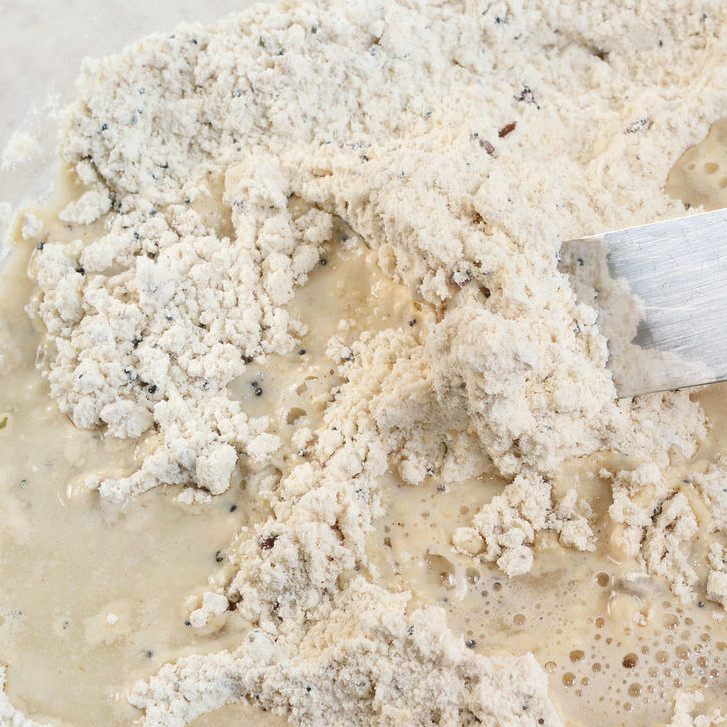
Sedimentation Test
What is a Sedimentation Test?
The sedimentation test is a physicochemical test that helps provides information on the baking quality of wheat flour. It is based on the suspension of flour in a dilute alcohol and acid solution which causes the flour particles to sediment.1,2
The sedimentation test is also used to grade different classes or types of wheat according to protein quantity and quality. It’s also a screening tool for the development of new hard wheat genotypes by plant breeders.
How does a sedimentation test work?
Unlike other baking quality tests, the sedimentation test does not assess the rheological properties of wheat flour-based doughs. Instead, it’s similar to the Solvent Retention Capacity (SRC). The sedimentation test is based on the density and swelling capacity of gluten-forming proteins in a flour-water slurry containing a lactic acid–isopropanol solution that has been stained with bromophenol.
Gluten proteins from strong flours tend to display higher rates of hydration (faster water absorption) and higher hydration capacity (absorb more water) than those of weak (softer) flours.
Sedimentation value is expressed as volume in mL of settled gluten and is dependent on the quantity as well as quality (strength) of the gluten in the flour sample. As the amount of water absorbed increases, the compactness of gluten particles decreases due to reduced density of the gluten particles, therefore sink or sediment more slowly.1,2
Application
How to do a sedimentation test, using the AACCI Official Method 56-61.022
Equipment needed:
- Glass stoppered graduated cylinder (100 mL)
- Chronometer
- 100-mesh sieve with collection pan (for flour preparation)
Ingredients and reagents needed:
- Wheat flours
- Isopropyl alcohol, 99–100% pure
- Lactic acid stock solution (dilute 250 mL U.S. Pharmacopeia 85% lactic acid to 1 liter with water)
- Methylene blue
- Bromophenol blue
Procedure
- Determine the moisture content of flour being studied. This value will be used to correct results based on a 14% moisture basis in case different moisture content.
- Place 10 g flour on the 100-mesh sieve with collection pan. Sift the flour manually for about 2 min to allow flour particles to become more loose. Collect flour in the collection pan when finished.
- Weigh 4 g of flour. Place flour into the 100 mL graduated cylinder, using a powder funnel.
- Add 50 mL of distilled (or reverse osmosis) water to the graduated cylinder. Run test in duplicate.
- Place stopper on the graduated cylinder and mix the flour-water slurry by shaking vigorously for 30 seconds.
- Allow slurry to stand for 5 minutes.
- Add 2 to 3 drops of methylene blue or bromophenol blue indicator into the cylinder, then add 25 mL of lactic acid / isopropyl alcohol solution (12.5 mL isopropyl and 12.5 mL lactic acid) with a buret.
- Gently mix the flour-water slurry with the liquid reagents by inverting and returning the cylinder to the upright position 10 to 12 times.
- Immediately after mixing, place the cylinder in an upright position and start timing with a chronometer.
- Allow slurry to stand for 5 minutes.
- At end of 5 min, read volume in mL (estimating tenths of mL) of sediment in cylinder. The volume in milliliters is the sedimentation value of the flour.
- Multiply the sedimentation value by the appropriate flour moisture factor detailed in AACCI Method 56-61.02.
Slow settling (higher sedimentation values) indicates a high protein quantity and/or stronger gluten protein. On the other hand, a rapid settling indicates a low protein content and/or poor gluten strength (gluten proteins cannot absorb as much water to become less dense). Sedimentation values usually correlate positively with protein content and loaf volume. So, the higher the sedimentation value, the greater the volume of the baked bread.
Typical sedimentation values for different flours
| Flour | Sedimentation value | Protein content | Loaf volume |
| Soft wheat | 10–15 | 6.0–9.0 | Lowest |
| Hard/soft blends | 15–25 | 9.0–10.0 | Medium |
| Hard wheat | 45–65 | 11.0–14.0 | Highest |
References
- Finnie, S., and Atwell, W.A. “Wheat and Flour Testing.” Wheat Flour, 2nd edition, AACC International, Inc., 2016, pp. 57–71.
- AACC International. Approved Methods of Analysis, 11th Ed. Method 56-61.02. Sedimentation Test for Wheat. Final approval April 28, 1964; Reapproval November 3, 1999. Cereals & Grains Association, St. Paul, MN, U.S.A.

